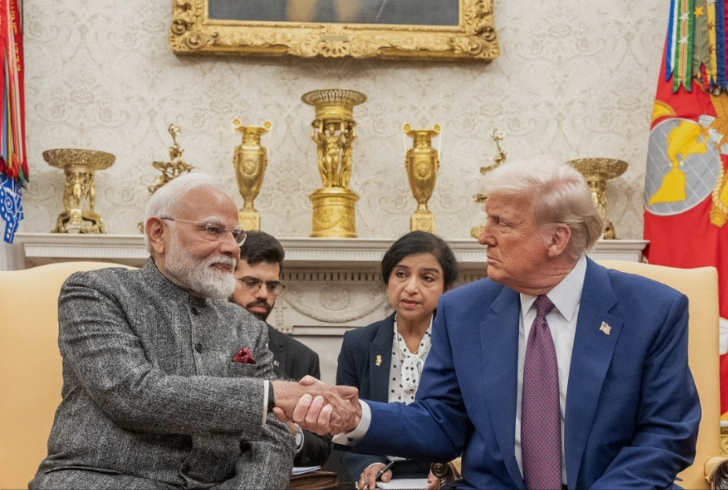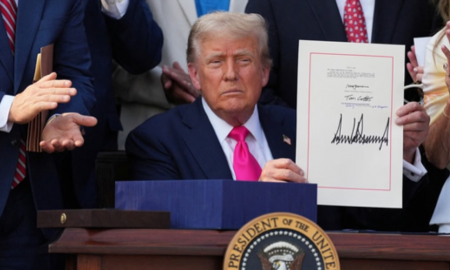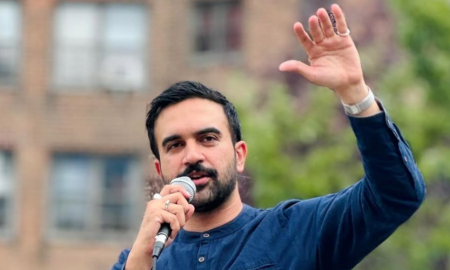
India’s Growing Role in Global Tech Governance

Technology is at the heart of modern economies, shaping industries, communication, and daily life. For years, the United States and China have dominated global tech governance, each offering contrasting approaches—one driven by free markets and innovation, the other by state control.
But now, India is positioning itself as a compelling third option, balancing economic growth with strategic digital policies.
India’s Digital Transformation
Over the past decade, India has implemented groundbreaking digital policies that have transformed its economy. The Digital India initiative, launched in 2015, played a pivotal role in expanding internet access, streamlining digital payments, and establishing a robust digital identity system.
This rapid growth has led to increased global influence, particularly in emerging economies looking for scalable digital models.
1. Aadhaar – The world’s largest biometric ID system, used by over a billion people.
2. Unified Payments Interface (UPI) – A real-time payment system that has revolutionized transactions.
3. Expanding Tech Workforce – Nearly six million Indians are employed in the technology sector.

Instagram | ddindialive | The implementation of digital policies, with UPI’s revolutionary payment system, has enabled India’s rapid economic growth.
This success has propelled India onto the global stage, offering an alternative approach to digital governance that stands apart from both American and Chinese models.
India’s Influence on Emerging Markets
India’s technological advancements are not just benefiting its own citizens but are also shaping digital economies worldwide. Several nations in the Global South are adopting India’s digital infrastructure models, attracted by their cost-effectiveness and efficiency. These efforts strengthen India’s role as a leader in tech diplomacy.
However, while India presents a strong alternative, it also faces challenges. The country has recorded over 800 internet shutdowns in the past decade, raising concerns about digital rights and press freedom. Content regulation remains a contentious issue, with major tech companies frequently clashing with government policies.
Tech Regulation and Content Moderation
The relationship between India’s government and global tech giants is complex. While India is a massive market for platforms like Facebook, Instagram, and WhatsApp, regulatory disagreements have created tensions. Recently, Meta’s Global Affairs Chief acknowledged the support his company receives from the U.S. government but remained largely silent on India’s regulatory landscape.
1. The Indian government has been vocal about regulating digital content to align with national security and cultural values.
2. Elon Musk’s platform X (formerly Twitter) has pushed back against government directives, even filing lawsuits against censorship demands.
3. Civil rights advocates argue that content restrictions hinder free speech and democratic principles.
Despite these conflicts, India remains an attractive market for tech companies, with its massive user base and growing digital economy.
India’s Role in Global Trade and Politics

Instagram | usembassyindia | India and the U.S. maintain strong trade and diplomatic links, but policy shifts can generate unpredictability.
Beyond tech governance, India’s economic and political relationships with major global powers influence its position in the digital world. While India and the U.S. share strong trade and diplomatic ties, policies under different administrations can introduce uncertainty. For instance, discussions around immigration policies and trade tariffs could impact the $33 billion in annual remittances sent by Indian professionals working in the U.S.
Additionally, ongoing trade negotiations with the European Union highlight India’s efforts to solidify its role in international trade. However, striking deals that balance economic growth with regulatory concerns remains a challenge.
The Future of India in Global Tech
India’s technological rise is undeniable, and its approach to digital governance is shaping conversations worldwide. The country is positioned as a strong alternative to the U.S. and China, offering a middle ground that prioritizes innovation while addressing national interests.
However, ensuring that digital policies align with democratic principles and global expectations will be crucial. India’s success in technology should go hand in hand with strong rule of law and digital rights protections. If these aspects grow in parallel, India’s vision to become a third force in global tech governance could become a defining model for the future.
More in Tech
-
`
What’s Changing for Student Loans After Trump’s New Spending Bill?
The passing of President Donald Trump’s latest spending bill is shaking up more than just tax brackets and business deductions—it’s poised...
July 16, 2025 -
`
Why Big Tech Is Divided on the Future of Artificial General Intelligence
Fifteen years ago, the founders of DeepMind—Sir Demis Hassabis, Mustafa Suleyman, and Shane Legg—set a bold goal: “Build the world’s first...
July 1, 2025 -
`
Planning a Wedding? These Money-Saving Tips Actually Work
Weddings are meant to be memorable, not financially draining. But for many couples, the cost of tying the knot often brings...
June 24, 2025 -
`
Did MrBeast Really Borrow Money From His Mother for His Wedding?
YouTube star Jimmy Donaldson, widely known as MrBeast, sparked surprise when he shared a personal update on X. Despite leading the...
June 17, 2025 -
`
How Smart Technology Is Changing the Way We Travel
Technology has reshaped nearly every part of modern life, and travel is no exception. From how we plan trips to how...
June 12, 2025 -
`
Why Some Tech CEOs Are Replacing Themselves With AI Avatars
In a move that signals a shift in how corporate communication is handled, major tech CEOs are beginning to hand the...
June 3, 2025 -
`
Is Innovation Dead in American Pop Culture?
Has something changed in the way we engage with American pop culture? Scroll through your favorite streaming service, tune into the...
May 27, 2025 -
`
7 Key Steps to Start a Profitable Digital Products Business
Starting a digital products business offers an exciting opportunity to turn your skills and knowledge into a revenue-generating venture. Whether you’re...
May 20, 2025 -
`
Mercedes-Benz Introduces the Vision V – An Ultra-Luxury Electric Limousine
The introduction of Mercedes-Benz’s Vision V concept represents a significant advancement in the field of electric vehicles. This electric minivan is...
May 13, 2025














You must be logged in to post a comment Login